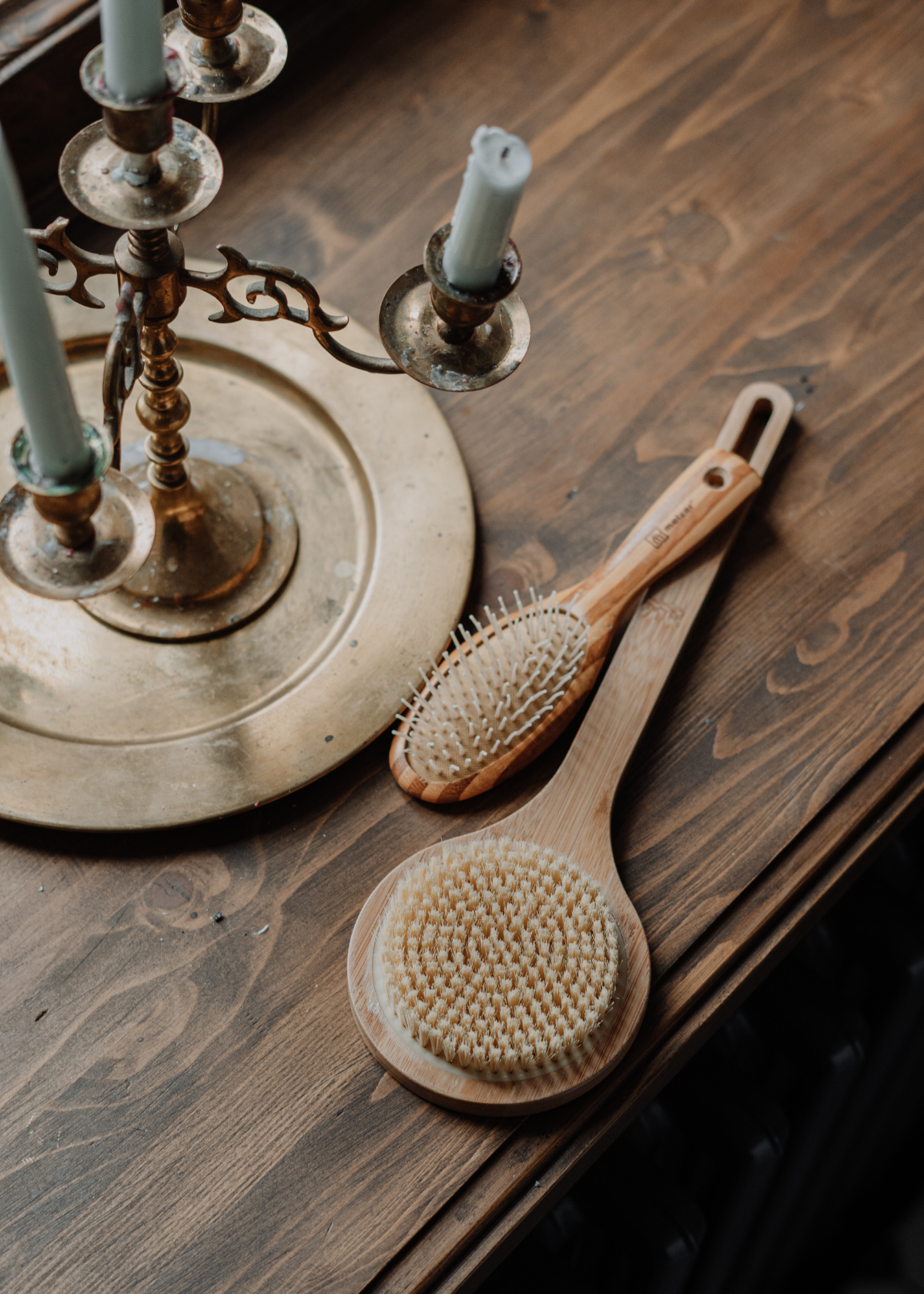Oh, the woes of having fine hair! It's like being a delicate flower in a world full of thick, luscious trees. But fear not, my fine-haired friends, for we have gathered the ultimate guide to care for your lovely locks. In this article, we'll reveal the short answer to keeping your fine hair looking fabulous: it's all about the right products, techniques, and TLC. Stick around as we dive into the secrets of managing and styling fine hair, and share tips from experts that will have your tresses turning heads in no time. Let's transform your fine hair from fragile to fantastic, one strand at a time!
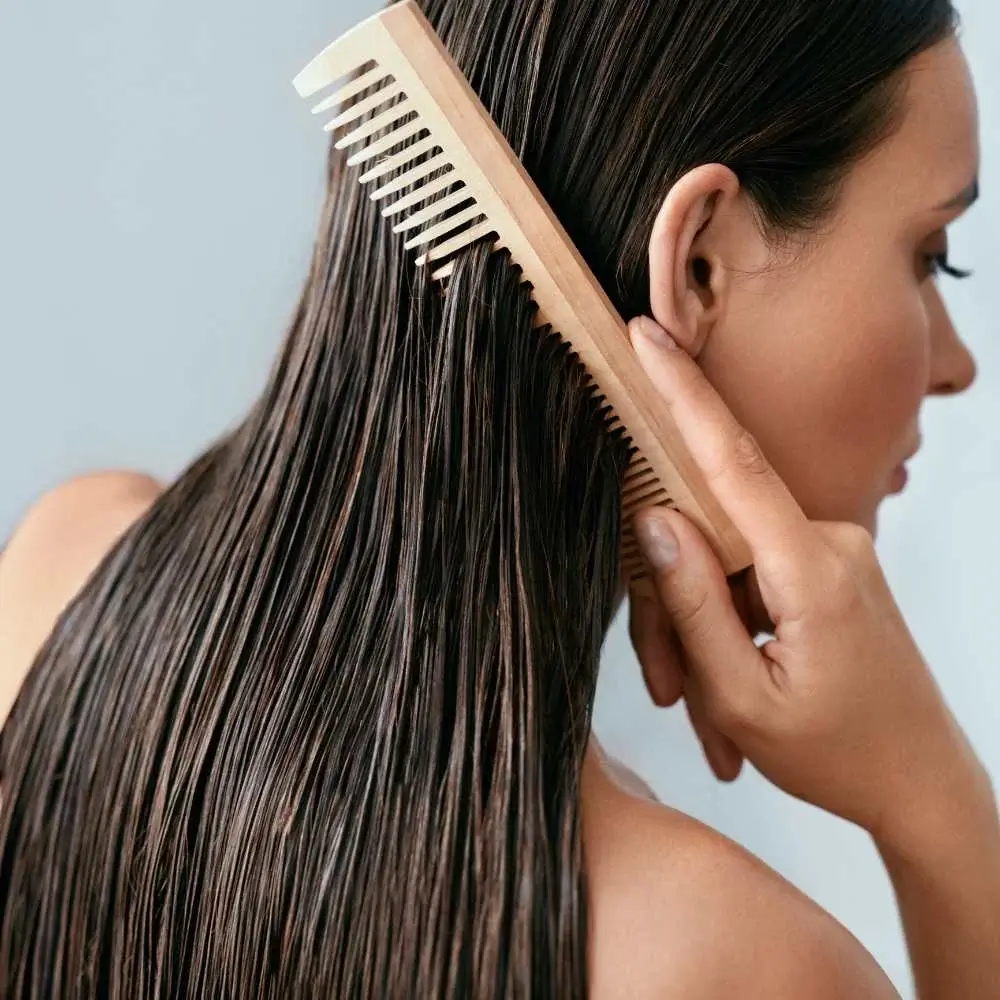
Understanding the Unique Properties of Fine Hair
When it comes to hair care, it's essential to understand that not all hair types are created equal. One of the most delicate and unique hair types is fine hair. To properly care for fine hair, you must first recognize its characteristics and how they differ from other hair types.
Fine hair is often described as having a smaller diameter than other hair types. This means that each individual strand of hair is thinner, making it more prone to breakage and damage. Additionally, fine hair tends to lack volume and can appear flat or lifeless without proper care.
One common misconception about fine hair is that it is synonymous with thin hair. However, this is not always the case. While some people with fine hair may have fewer strands, others may have a normal or even high density of hair. The key difference lies in the thickness of each strand.
Now that we've established the unique properties of fine hair let's dive into the best ways to care for it and keep it healthy and vibrant.
Choosing the Right Shampoo and Conditioner for Optimal Fine Hair Care
The first step in caring for fine hair is selecting the appropriate shampoo and conditioner. Look for products specifically designed for fine hair, as these will be formulated to add volume and body without weighing your hair down.
Avoid heavy, moisturizing shampoos and conditioners that can make your hair feel greasy and limp. Instead, opt for lightweight, volumizing formulas that cleanse and nourish without adding unnecessary weight.
When choosing a shampoo for fine hair, consider one with ingredients like biotin or keratin, which can help strengthen the hair and prevent breakage. Similarly, a conditioner with hydrolyzed proteins can provide lightweight moisture while still offering protection and strength to fine hair.
Proper Washing Techniques to Protect and Clean Fine Hair
Washing fine hair requires a gentle touch to prevent damage and breakage. Start by thoroughly wetting your hair, then apply a small amount of shampoo to your scalp. Use your fingertips to gently massage the shampoo into your roots, focusing on areas with excess oil or buildup.
As you rinse the shampoo out of your hair, allow the suds to flow down the length of your strands, cleaning them without the need for vigorous scrubbing. This will help minimize tangles and prevent unnecessary stress on your delicate fine hair.
When it's time to condition, focus on applying the product to the mid-lengths and ends of your hair, avoiding the roots. This will provide the necessary moisture and protection without weighing your hair down. Be sure to rinse thoroughly to avoid any residue that could make your hair appear greasy or limp.
The Significance of Using Lightweight Styling Products for Fine Hair
The styling products you choose can make all the difference in the appearance and manageability of your fine hair. Opt for lightweight products that offer hold and volume without adding weight or stickiness.
Mousse, for example, is a great choice for fine hair, as it provides lift and body without making your hair feel heavy. Similarly, a lightweight volumizing spray can help give your roots a boost, creating the illusion of fuller, thicker hair.
Avoid heavy, oil-based products like pomades or serums, as these can weigh your hair down and make it appear greasy. Instead, look for water-based formulas that provide shine and frizz control without sacrificing volume.
Remember, when it comes to fine hair, less is often more. Start with a small amount of product and add more as needed, being careful not to overdo it and weigh your hair down.
By understanding the unique characteristics of fine hair and choosing the right products and techniques, you can keep your delicate strands healthy, strong, and full of life. With proper care, fine hair can be just as beautiful and versatile as any other hair type.
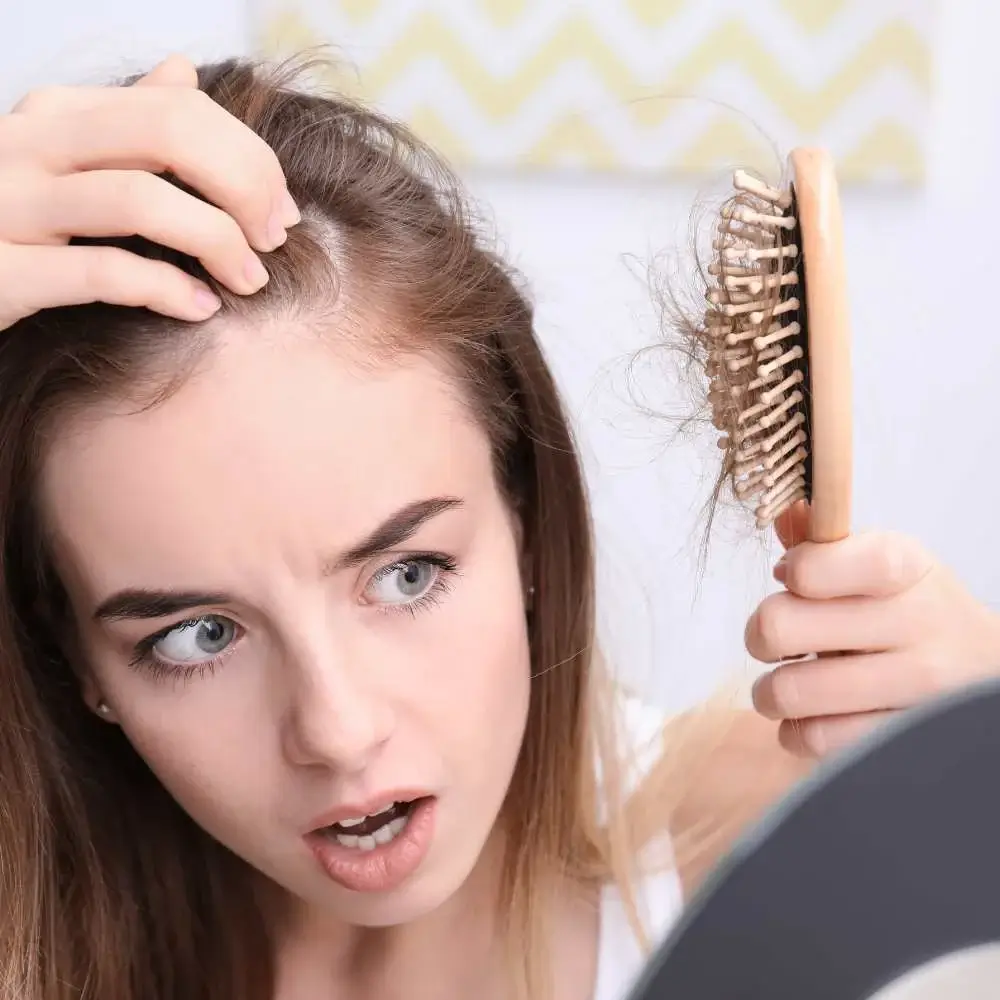
How to Care for Fine Hair
Step 1: Lather Up and Condition with Fabulous Products
Washing your fine hair can be a delightful experience when you choose the right shampoo and conditioner! Be kind to your lovely locks by using a gentle, sulfate-free duo that won't rob them of their natural oils. May we suggest the oh-so-amazing L'Oreal Paris EverPure Shampoo and Conditioner set? It's crafted especially for your fine, sensitive tresses and will keep them looking luscious and quenched. So go ahead, pamper your hair, and let it shine!
Step 2: Play It Cool with the Heat, Darling!
Fine hair can be a bit sensitive when it comes to heat styling, so let's not scorch those delicate strands! Before you whip out your favorite heat tools, give your hair a spritz of a trusty heat protectant spray, like our beloved Tresemme Thermal Creations Heat Tamer Spray. Not only will it shield your gorgeous locks from heat damage, but it'll also help your style stay fabulous and in place. So go on, and style away while keeping your fine hair happy and healthy!
Step 3: Brush with Love and Care, Sweetie!
Those fine tresses of yours can get tangled up in knots quite easily, so let's be extra gentle when brushing them out. We suggest using a wide-tooth comb or a paddle brush for the smoothest glide. Begin at the bottom of your hair and gracefully work your way up, being mindful not to yank or pull on your precious strands.
Fine hair truly deserves royal treatment! By following these fabulous steps, you'll have your fine hair looking healthy, hydrated, and absolutely stunning.
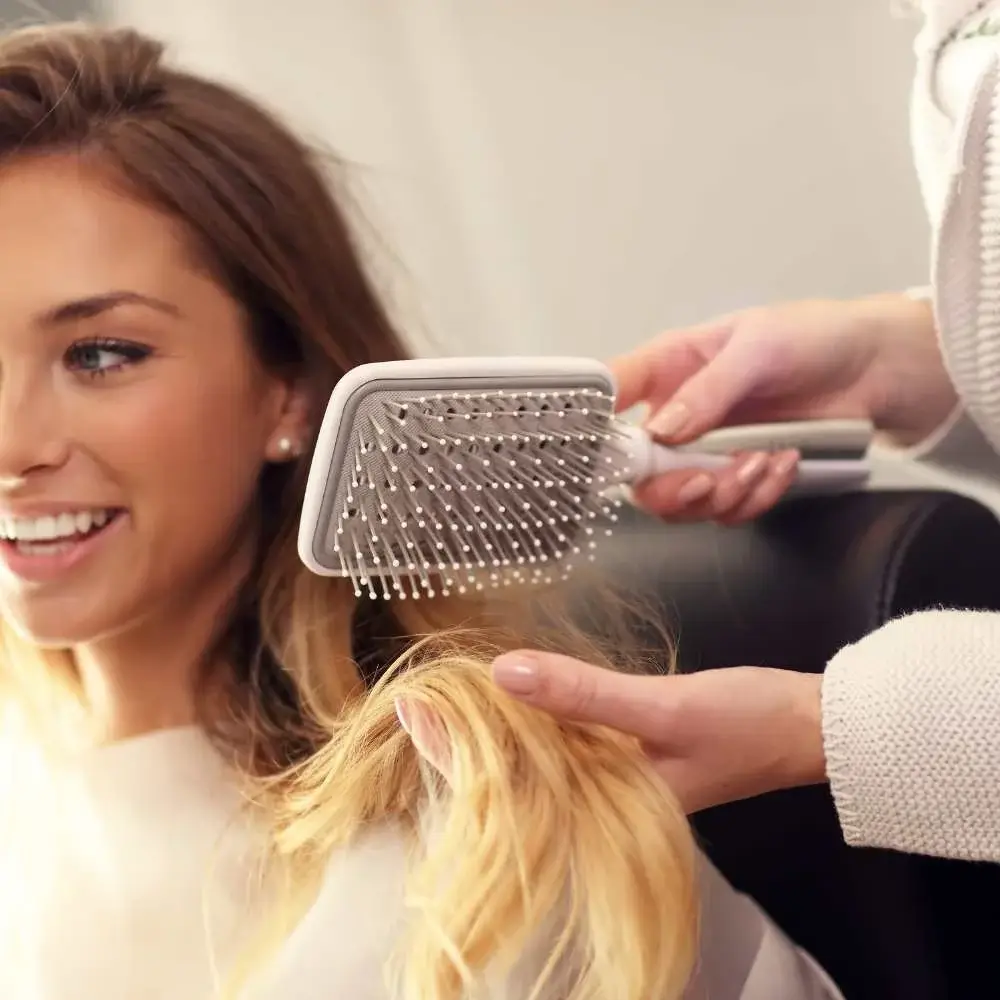
The Art of Heat Styling Fine Hair
The Do's and Don'ts of Heat Styling for Fine Hair
When it comes to caring for fine hair, one of the most important aspects is understanding how to safely and effectively use heat styling tools. With the right approach, you can achieve stunning results without causing damage to your delicate strands. Let's take a look at the best practices and safety measures for heat-styling fine hair.
Choosing the Right Tools for Fine Hair
The first step in heat styling fine hair is selecting the appropriate tools. Look for devices specifically designed for fine hair, as these will typically have lower heat settings and more even heat distribution. This ensures that your hair is exposed to the least amount of heat necessary to achieve the desired style.
Ceramic and tourmaline tools are a great choice for fine hair, as they produce gentle, consistent heat and help to minimize frizz and static. Additionally, these materials can help protect your hair from heat damage by distributing heat more evenly and reducing the risk of hot spots.
Prepping Your Hair for Heat Styling
Before you start using any heat styling tools on your fine hair, it's crucial to prep your hair properly. This includes using a heat protectant spray or serum to create a barrier between your hair and the heat source. This will help minimize the potential for damage while still allowing you to achieve your desired style.
Make sure to apply the product evenly throughout your hair, focusing on the mid-lengths and ends where damage is most likely to occur. Allow the product to fully dry before proceeding with heat styling.
Heat Styling Techniques for Fine Hair
When using heat styling tools on fine hair, it's essential to be gentle and patient. Begin by setting your tool to the lowest heat setting possible, and gradually increasing the temperature if needed to achieve the desired result.
Work in small sections, and avoid holding the heat tool on your hair for extended periods. This will help minimize the risk of damage and ensure that your hair remains healthy and strong.
When using a flat iron or curling wand, be sure to glide the tool smoothly and consistently through your hair, avoiding any tugging or pulling. This will reduce the risk of breakage and help you achieve a more polished finish.
Post-Heat Styling Care
After you've finished heat styling your fine hair, it's important to take steps to maintain its health and vitality. Use a lightweight hair oil or serum to add shine and smooth any flyaways, being careful not to apply too much product and weigh your hair down.
Additionally, make sure to give your hair a break from heat styling whenever possible. Incorporate no-heat styling techniques into your routine, and invest in regular trims to keep your ends healthy and free of split ends.
By following these best practices and safety measures for heat-styling fine hair, you can enjoy stunning, salon-worthy styles without compromising the health and integrity of your delicate strands. With the right approach, caring for fine hair can be both enjoyable and rewarding.
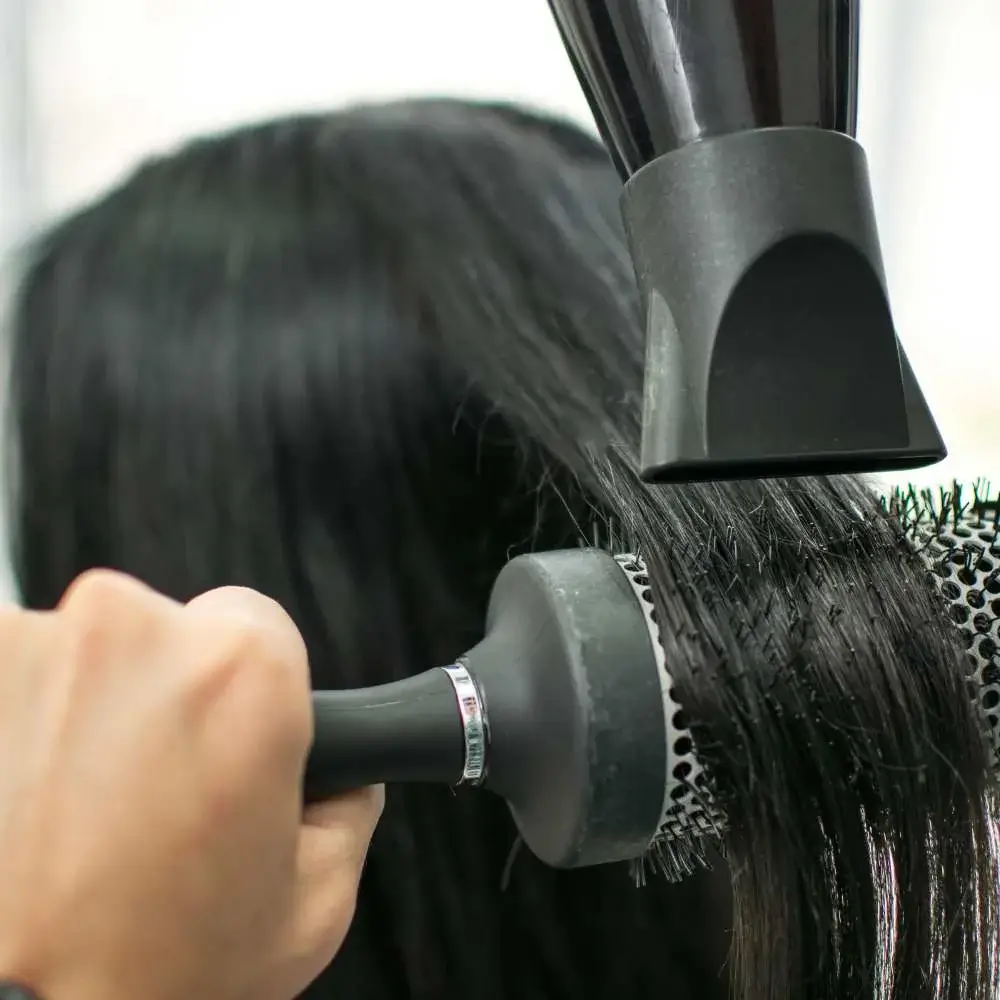
Preventing Breakage and Damage
The Importance of a Gentle Approach to Fine Hair Care
Caring for fine hair can be a delicate balancing act, as this hair type is more prone to breakage and damage than its coarser counterparts. To maintain the health and beauty of your fine hair, it's essential to adopt a gentle, nurturing approach to your hair care regimen. Let's explore some key strategies for preventing breakage and damage in your fine hair care routine.
Detangling with Care
One of the most common causes of breakage in fine hair is improper detangling. When faced with knots and tangles, it's important to exercise patience and use the right tools to avoid causing unnecessary stress to your delicate strands.
Opt for a wide-tooth comb or a brush specifically designed for detangling, such as a Tangle Teezer or a Wet Brush. These tools can help gently work through knots without pulling or breaking your hair.
When detangling, always start at the ends of your hair and work your way up towards the roots. This method helps to minimize breakage and makes the process smoother and less painful.
Minimizing Heat Exposure
As previously discussed, heat styling can be particularly damaging to fine hair. To prevent breakage and damage, try to limit your use of heat styling tools and embrace no-heat styling methods whenever possible.
When you do use heat styling tools, always apply a heat protectant and use the lowest heat setting necessary to achieve your desired style. Additionally, consider investing in high-quality tools with ceramic or tourmaline plates, as these materials can help minimize heat damage.
Strengthening Your Hair from Within
Taking care of your fine hair isn't just about the products you use on the outside; it also involves nourishing your hair from within. A well-rounded diet rich in vitamins and minerals, such as biotin, iron, and zinc, can help support healthy hair growth and reduce the risk of breakage.
In addition to a balanced diet, consider incorporating hair-boosting supplements into your routine. Look for products that contain ingredients like biotin, keratin, and collagen, which can help improve the strength and elasticity of your hair.
Protective Styling and Sleep Practices
Finally, it's essential to be mindful of how you style and protect your fine hair throughout the day and night. Opt for loose, low-tension hairstyles that don't put excessive strain on your hair, such as braids or loose buns.
When it comes to sleep, consider investing in a silk or satin pillowcase. These materials create less friction on your hair than traditional cotton pillowcases, reducing the risk of breakage and damage while you sleep.
By incorporating these preventative measures into your fine hair care routine, you can minimize breakage and damage, ensuring that your delicate strands remain healthy, strong, and beautiful. With the right approach, caring for fine hair can be a rewarding and enjoyable experience.
Hair Brush for Fine Hair
Oh, fine-haired darlings, we know the struggle of finding that perfect hairbrush! So many brushes out there love to tug and pull at your delicate strands, leaving them feeling sad and prone to breakage. But fear not, for we've found brushes specially designed for your fine tresses, offering a gentle touch while keeping your locks fabulous.
These beauties have sturdy yet oh-so-soft bristles that won't snag or yank on your fragile strands. They're simply perfect for anyone with fine hair seeking a hassle-free styling buddy. So why not wave goodbye to breakage and damage, and give these fine hair brushes a whirl? Trust us, your hair will be singing your praises!
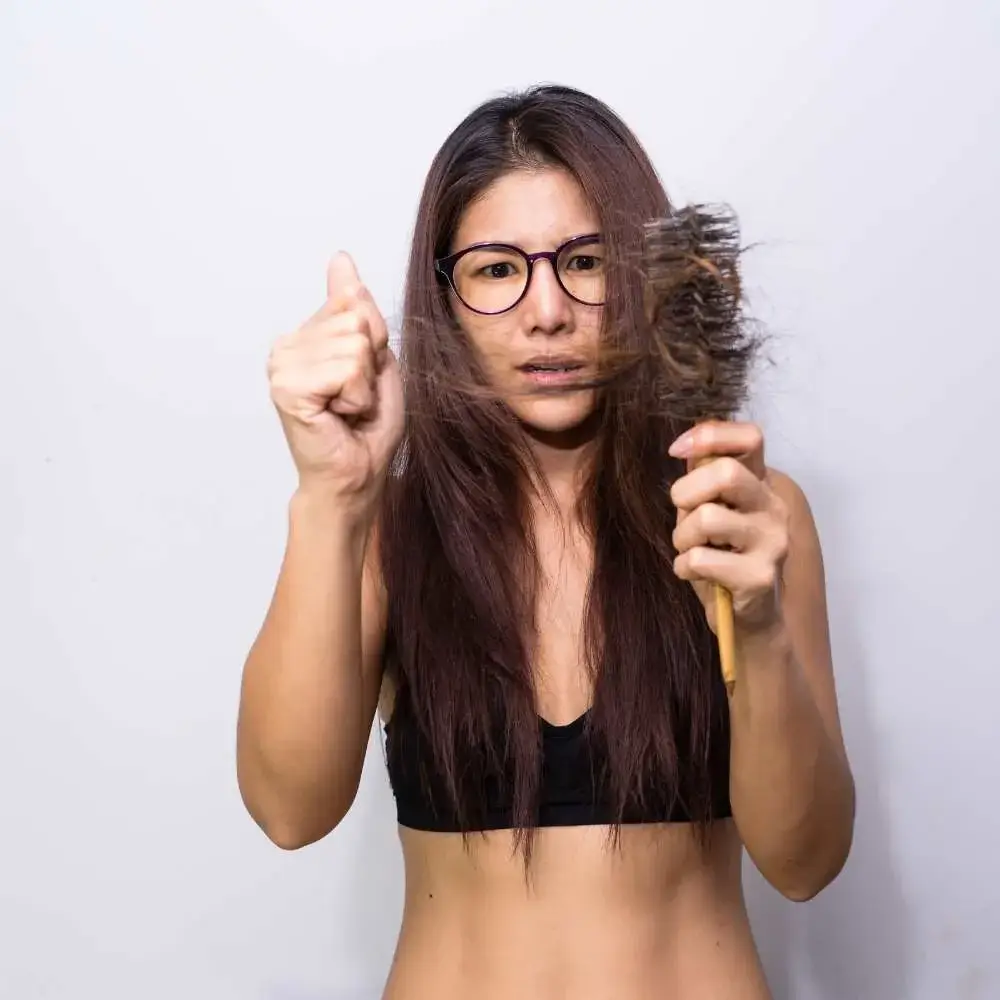
Navigating the Fine Line: FAQs for Fine Hair Care Mastery
What type of shampoo should I use for fine hair?
When it comes to shampooing those delicate strands, opt for a lightweight, volumizing formula that's specifically designed to give your fine hair the boost it needs without weighing it down. Keep an eye out for buzzwords like "volumizing," "thickening," or "lightweight" on the label. And here's a bonus tip: to truly elevate your hair game, make sure to choose a sulfate-free shampoo, as sulfates can strip your locks of their much-needed moisture. So, let the hunt begin and may the voluminous force be with you!
How often should I wash fine hair?
The secret to caring for your fine hair is not over-washing it. While you might be tempted to suds up daily, it's actually best to wash those lovely locks every 2-3 days. This allows your scalp's natural oils to work their wonders without weighing down your precious strands. And fret not, for dry shampoo is here to be your trusty sidekick on those non-wash days, keeping your 'do looking fresh and fabulous. So, embrace this easy-breezy washing routine and watch your fine hair flourish!
Can fine hair handle heat styling, or should it be avoided?
While it can create stunning styles, it also has the potential to wreak havoc on your delicate fine hair. But fear not, for you don't have to banish your styling tools to the land of misfit appliances. The key is to practice moderation and take precautions. When it comes to fine hair, go easy on the heat – use the lowest setting possible to achieve your desired results. And never, I repeat, never skip the heat protectant spray! This magical potion creates a barrier between your hair and the heat, shielding your fine strands from damage. So, with a little care and a lot of common sense, your fine hair can handle occasional heat styling without turning into a frizz-tastic disaster. Happy styling!

How can I prevent my fine hair from looking flat?
While it's true that your delicate strands may be prone to falling flat, there are plenty of ways to keep them looking lively and voluminous. First things first, embrace the power of a lightweight volumizing mousse or root-lifting spray – these magical elixirs can give your fine locks the oomph they need without weighing them down. Next up, master the art of strategic styling: try blow-drying your hair upside-down or using large Velcro rollers for some extra lift at the roots. And let's not forget about the game-changing potential of a good haircut – layers, texture, and the right length can do wonders for adding dimension to your fine hair. So, armed with these tricks of the trade, you can banish flat hair days to the realm of bad memories and flaunt your fabulous, full-bodied tresses with pride!
Is it better to air-dry fine hair or blow-dry it?
When it comes to fine hair care, there's no one-size-fits-all answer. Each method has its pros and cons, so let's break it down, shall we? Air-drying is the gentlest approach, as it exposes your delicate strands to zero heat, reducing the risk of damage. However, it may leave your locks looking a tad limp – not exactly the voluminous look you're aiming for. On the flip side, blow-drying can create that coveted lift and body, but beware: too much heat can be your hair's arch-nemesis. The key is finding a happy medium! Try partially air-drying your hair and then finish with a quick, low-heat blow-dry to achieve a balance between volume and hair health. And never forget the golden rule: always use a heat protectant spray! So, experiment with these techniques and discover the perfect drying method for your fine-haired fabulousness.
How can I add volume to fine hair without causing damage?
There are plenty of ways to pump up the volume without putting your delicate tresses at risk. For starters, say hello to your new best friends: lightweight volumizing products like mousse and root-lifting spray. These wonders work their magic without weighing down your precious strands. Next, let's talk technique: try the age-old trick of flipping your head upside-down while blow-drying on a low heat setting (with a heat protectant, of course!). This gravity-defying move will help you achieve some serious root lift. And let's not forget the power of a good haircut – layers, texture, and strategic length can create the illusion of volume without any damage. Lastly, consider incorporating gentle, heat-free styling methods such as Velcro rollers, braiding, or pin curls to give your fine hair that extra oomph. With these damage-free tips and tricks in your arsenal, you'll be well on your way to voluminous, envy-inducing locks!
Read our article about best shampoo for dark hair here!
Read our article about best makeup brush cleaner here!
Read our article about best cruelty free lipstick here!


